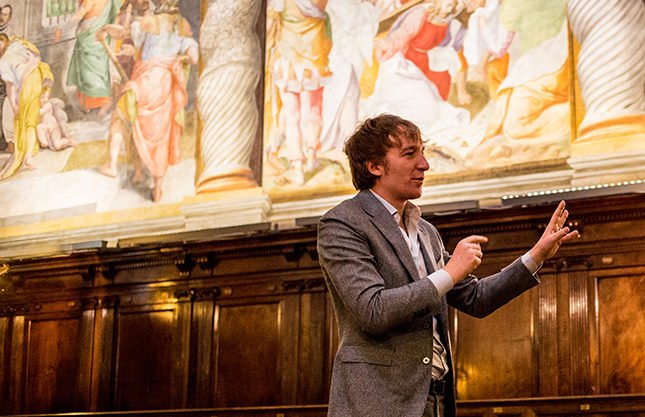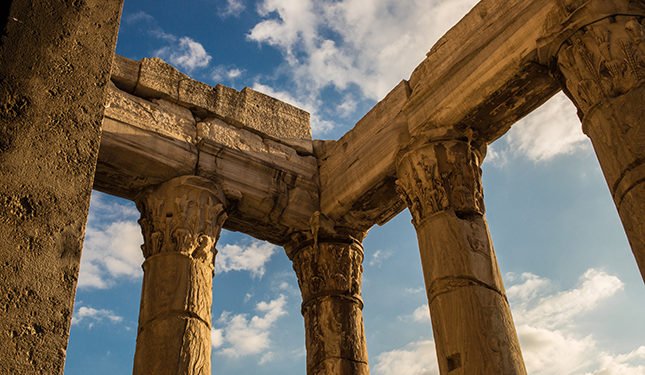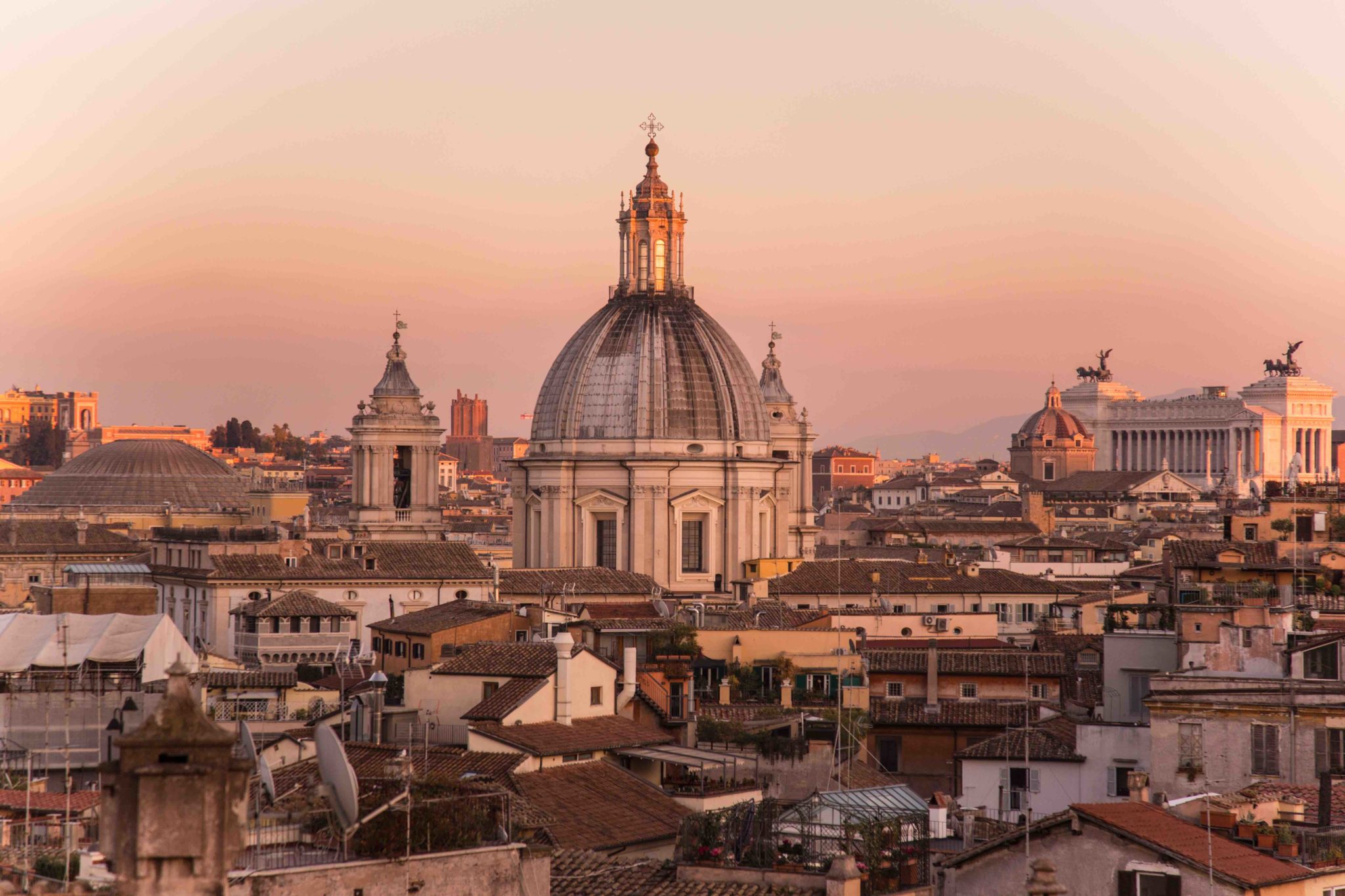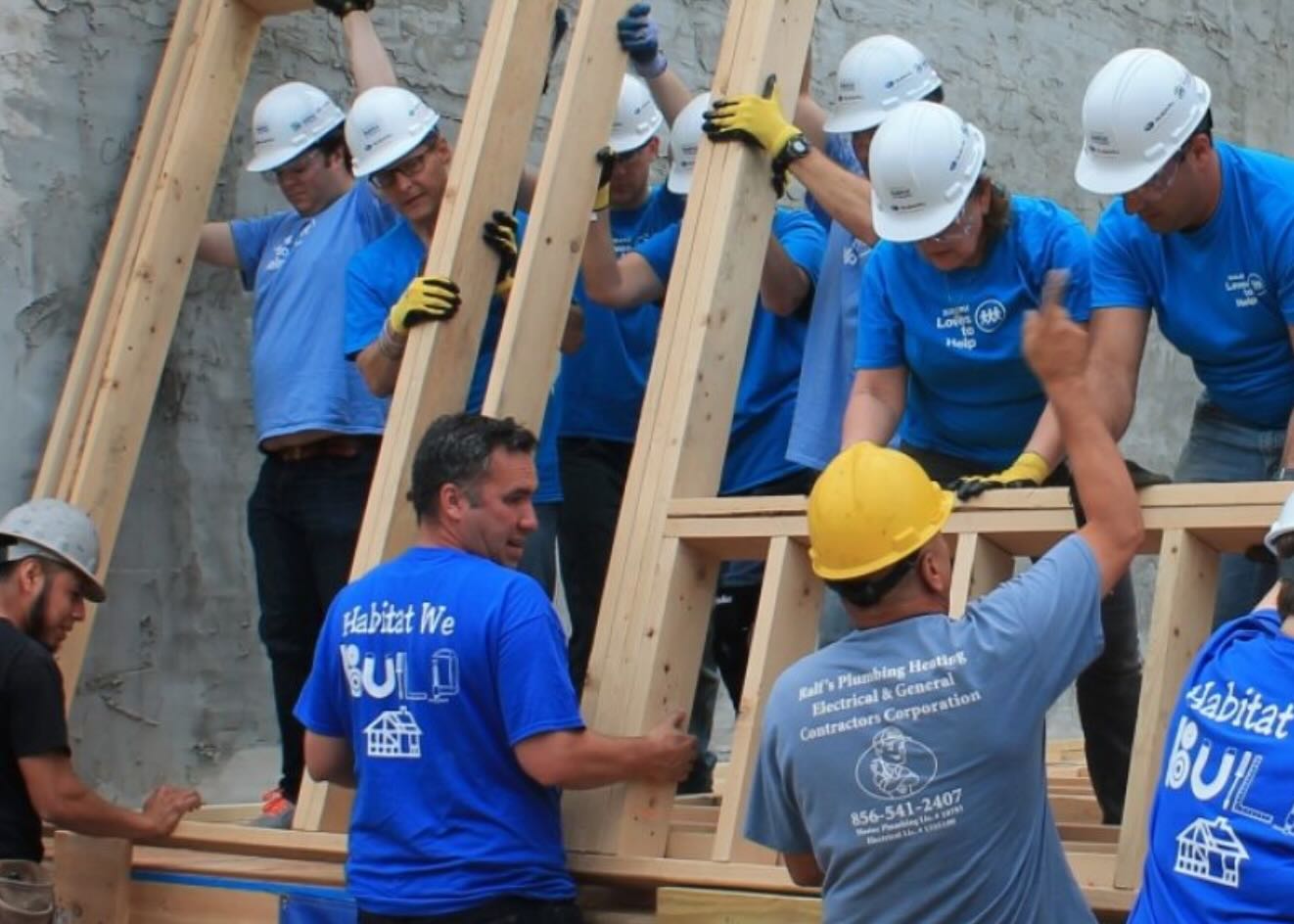Disclaimer: I’m a profound Italophile, fluent in Italian and an admitted Italy snob. I normally disdain tour guides, but art historian Fulvio de Bonis, of Imago Artis, recently showed me parts of Rome I’m convinced I wouldn’t have experienced any other way, and he did it on a three-hour tour as engaging for me as it was for my non-Italian speaking husband and daughter.
De Bonis, 40, a cheery Rome native who snuck into the Colosseum for illicit soccer games as a boy, is as well versed in Roman history as he is in luxury Italian hotels and services, regularly sharing his favorite restaurants and hidden treasures with clients like Jeff Bezos and Keanu Reeves. Among the highlights of our morning together: peeking into a church near the Colosseum, whose underground Roman ruins, dating to the 1st century AD, included a hot water spring. To my daughter’s delight, de Bonis gave us virtual reality goggles for our stop at the Circus Maximus, so that what is now an empty field became alive with horses and chariots racing through the hippodrome Julius Caesar built in the 1st century BC (and later expanded under Constantine to hold 250,000 spectators).


After our visit to the Colosseum, where de Bonis ably navigated us away from the throngs and to the amphitheater’s highest point, we stopped at a nearby 17th-century church that stands on the ruins of a 2nd-century temple. Lucky for us, the church’s archive is run by one of de Bonis’ former classmates. Ushered into the empty church’s nave, the three of us sat expectantly on a bench while de Bonis and his friend opened the massive shutters for a big reveal: We found ourselves perched on the edge of the Roman Forum, on a balcony away from the crowds but close enough to see the details that de Bonis described.

My favorite moment, though, happened away from any public monument. I confess to having been dubious when de Bonis said we were going to the home of an extremely august Roman family. (When I worked as a journalist in Milan, I frequently found myself invited to dilapidated villas by well-meaning publicists used to Americans oohing and aahing over the once grand homes). As we sat in de Bonis’ luxury SUV on the way to a posh residential neighborhood, I was leery. Reader, I was wrong. Passing an impressive wisteria trellis, we followed de Bonis to a finished basement. He asked my daughter to turn on a light switch, revealing a picture window overlooking the ruins of a 1st century AD Roman general’s home (discovered, inadvertently, when the home owners began digging to add a garage). We opened a connecting door and walked around the site, complete with original pottery shards, mosaic tiling and the small bust of a Roman emperor, savoring a hidden corner in a city of so many obvious splendors.
Contact: 39.06.876.599.77, iatravel.com






